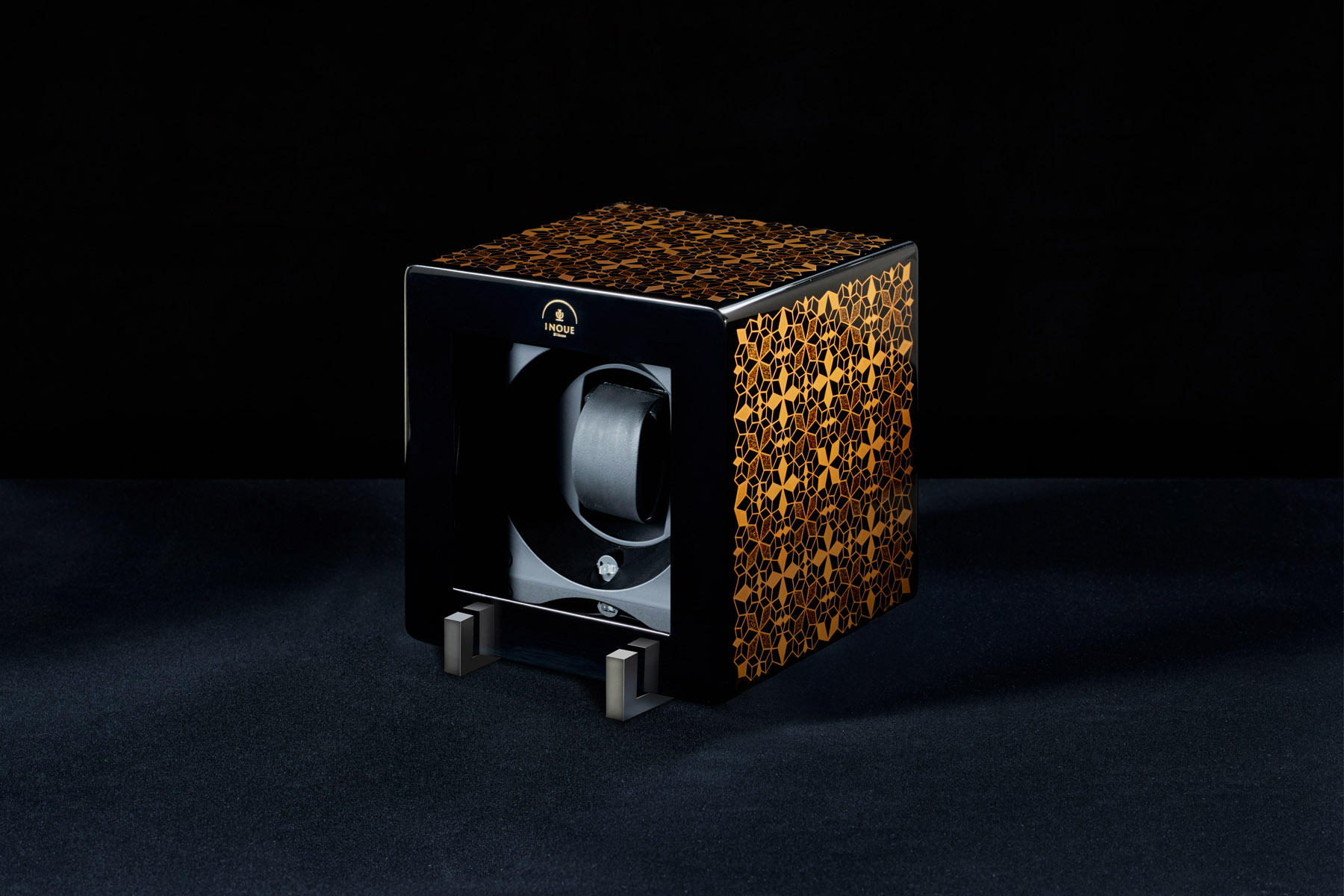SHIHOU, Winder Watchcase

A watch winder case that serves as a treasure chest for storing your wristwatch.
“Shihou” means all four cardinal directions: north, south, east, and west. This product is a high-quality box that acts as a square shell for a watch winder. The square is a shape that is widely used in Japanese culture, from origami to tea rooms. Hence, this shell does not simply cover the winder, it envelops it in culture.* This watch winder case is specially designed to hold the famous and reliable SWISS Kubik watch winders.
| Title | SHIHOU, Winder Watchcase |
|---|---|
| Date | 2015.10 |
| Theme | Watch Winder Case |
| Techniques | Wood working, high-gloss lacquer finish, gold maki-e |
| Materials | Hiba wood, lacquer, gold powder, aluminum (base) |
| Size | Height:155mm; width:144mm; depth:163mm |
| Design | GreenValley Co., Ltd. |
| Photography | Keisuke Ono |
Integrated traditional materials and techniques
Hiba wood, a thick variety of Japanese cypress, is used to make a sturdy shell.
The entire object is finished with a high-gloss lacquer finish and decorated with traditional Japanese maki-e designs that combine dignity and ornamentation.
Woodworking
Working with unfinished wood is an important initial process for creating the foundation or frame of a product.
Woodworking at INOUE is based on the exacting quality found in the traditional arts that have been cultivated by the production of Buddhist altars in the castle town of Hikone since the Edo Period (1603-1868 CE). Craftsmen produced these altars by hand and without nails, demanding uncompromising quality in the careful selection of the best materials for use in mortise and tenon construction. These altars are durable enough to be handed down through many generations. Furthermore, we have connections with woodworking shops in other areas that specialize in mass production, allowing us to select the appropriate methods of woodworking for any project.Lacquering
Lacquer is Japan’s exceptionally beautiful and high-quality traditional method of finishing. It is one of the most protective coatings in existence but can be very difficult to handle. Applying lacquer evenly requires the touch of a skillful craftsman from the first coat. The lacquer must be applied in many coats, from the first coat to the final finish, and the painting and polishing processes must be repeated many times over.
A high-gloss lacquer finish, considered the highest level of lacquer, involves the painted lacquer being polished flat, after which raw lacquer is repeatedly rubbed into the surface and polished to bring out a deep luster that is nearly mirror-like.
Based on our extensive knowledge of producing Buddhist altars, INOUE is able to offer the appropriate lacquering methods and craftsmen capable of implementing them, from a black, high-gloss lacquer finishes to a broad range of other coatings and lacquer colors.Maki-e
Maki-e is an artistic lacquer technique that involves drawing pictures or patterns using lacquer and then sprinkling them with gold dust or other fine powders. Maki-e originates in Japan and is one of the unique traditional techniques developed here. Maki-e includes many subsidiary techniques, such as hiramakie, takamakie, and togidashimakie. Furthermore, maki-e includes a wide variety of different end products, such as the expression of depth through different types or sizes of gold powder and the application of a variety of processing techniques.
At INOUE, we have built a network of maki-e craftsmen with a wide range of skills, allowing us to provide the skills needed for any project, from projects demanding the utmost quality to those needing to fit into a tight budget.